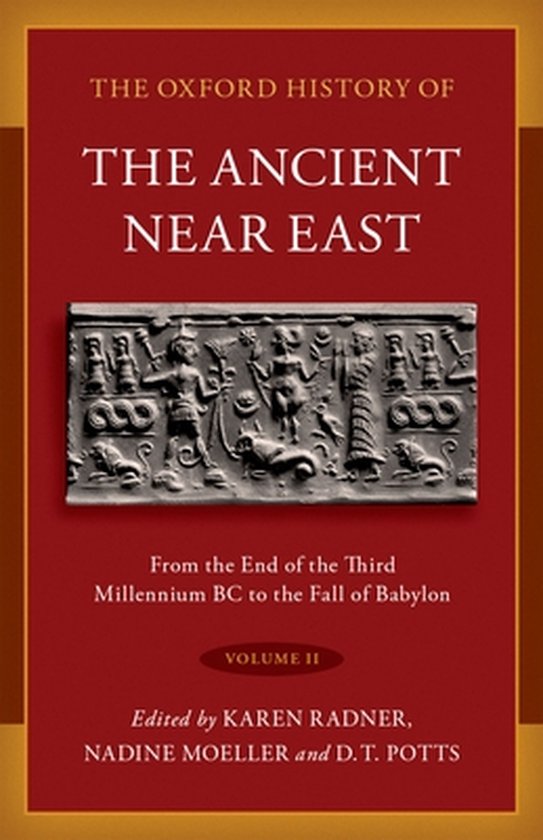
Oxford History of the Ancient Near East-The Oxford History of the Ancient Near East
The Oxford History of Ancient Near East, Volume 2 covers broadly the first half of the second millennium BC or in archaeological terms, the Middle Bronze Age. Eleven chapters present the history of the Near East, from the First Intermediate Period and Middle Kingdom of Egypt to Hammurabi's Babylon.
This groundbreaking, five-volume series offers a comprehensive, fully illustrated history of Egypt and Western Asia (the Levant, Anatolia, Mesopotamia, and Iran), from the emergence of complex states to the conquest of Alexander the Great. Written by a diverse, international team of leading scholars whose expertise brings to life the people, places, and times of the remote past, the volumes in this series focus firmly on the political and social histories of the states and communities of the ancient Near East. Individual chapters present the key textual and material sources underpinning the historical reconstruction, paying particular attention to the most recent archaeological finds and their impact on our historical understanding of the periods surveyed. The second volume covers broadly the first half of the second millennium BC or in archaeological terms, the Middle Bronze Age. Eleven chapters present the history of the Near East, beginning with the First Intermediate Period and Middle Kingdom Egypt and the Mesopotamian kingdoms of Ur (Third Dynasty), Isin and Larsa. The complex mosaic of competing states that arose between the Eastern Mediterranean, the Anatolian highlands and the Zagros mountains of Iran are all treated, culminating in an examination of the kingdom of Babylon founded by Hammurabi and maintained by his successors. Beyond the narrative history of each region considered, the volume treats a wide range of critical topics, including the absolute chronology; state formation and disintegration; the role of kingship, cult practice and material culture in the creation and maintenance of social hierarchies; and long-distance trade-both terrestrial and maritime-as a vital factor in the creation of social, political and economic networks that bridged deserts, oceans, and mountain ranges, binding together the extraordinarily diverse peoples and polities of Sub-Saharan Africa, the Near East, and Central Asia.
This groundbreaking, five-volume series offers a comprehensive, fully illustrated history of Egypt and Western Asia (the Levant, Anatolia, Mesopotamia, and Iran), from the emergence of complex states to the conquest of Alexander the Great. Written by a diverse, international team of leading scholars whose expertise brings to life the people, places, and times of the remote past, the volumes in this series focus firmly on the political and social histories of the states and communities of the ancient Near East. Individual chapters present the key textual and material sources underpinning the historical reconstruction, paying particular attention to the most recent archaeological finds and their impact on our historical understanding of the periods surveyed. The second volume covers broadly the first half of the second millennium BC or in archaeological terms, the Middle Bronze Age. Eleven chapters present the history of the Near East, beginning with the First Intermediate Period and Middle Kingdom Egypt and the Mesopotamian kingdoms of Ur (Third Dynasty), Isin and Larsa. The complex mosaic of competing states that arose between the Eastern Mediterranean, the Anatolian highlands and the Zagros mountains of Iran are all treated, culminating in an examination of the kingdom of Babylon founded by Hammurabi and maintained by his successors. Beyond the narrative history of each region considered, the volume treats a wide range of critical topics, including the absolute chronology; state formation and disintegration; the role of kingship, cult practice and material culture in the creation and maintenance of social hierarchies; and long-distance trade-both terrestrial and maritime-as a vital factor in the creation of social, political and economic networks that bridged deserts, oceans, and mountain ranges, binding together the extraordinarily diverse peoples and polities of Sub-Saharan Africa, the Near East, and Central Asia.
| Auteur | | Karen Radner |
| Taal | | Engels |
| Type | | Hardcover |
| Categorie | | Religie, Spiritualiteit & Filosofie |



